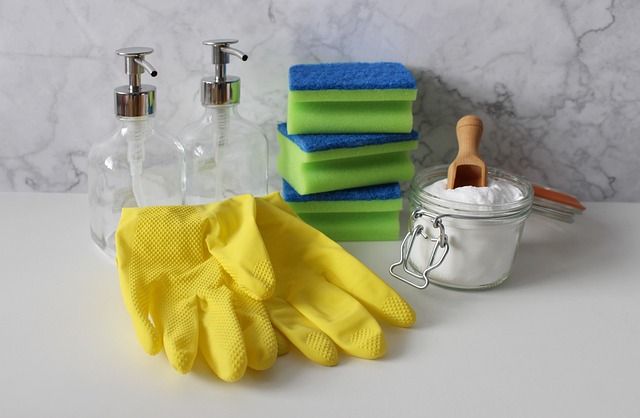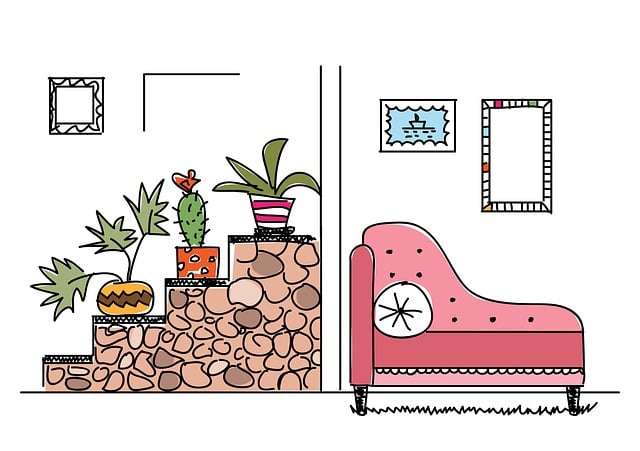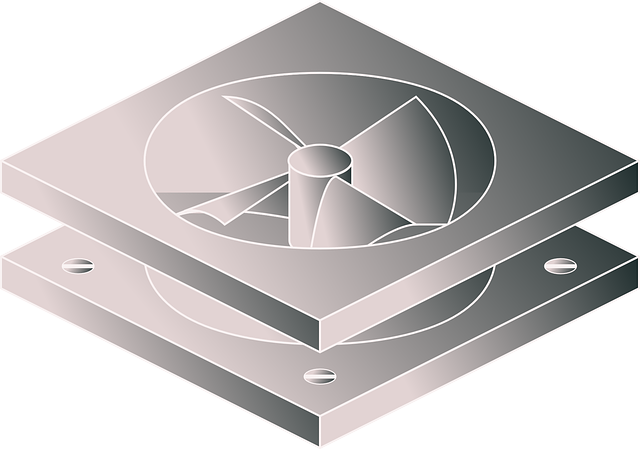This text provides comprehensive guidance on home mold prevention. It emphasizes the importance of humidity control as key to discouraging mold growth. The main strategies include identifying and addressing high-risk areas (basements, bathrooms, kitchens), implementing robust ventilation, using dehumidifiers, regular cleaning with disinfectants, and monitoring indoor humidity levels (30-50% is ideal). By following these mold prevention tips, homeowners can create a healthy environment and avoid the risks associated with mold.
“Discover effective cleaning strategies to prevent household mold and create a healthy living environment. Understanding mold growth and its impact is the first step towards a mold-free home. We’ll guide you through identifying high-risk areas, implementing humidity control measures, establishing regular cleaning routines, improving ventilation, and choosing the right tools for optimal mold prevention. Learn the best ways to stop mold in its tracks and avoid costly remediation.”
- Understanding Mold Growth and Its Impact on Your Home
- Identifying High-Risk Areas for Mold Formation
- Humidity Control: The Key to Preventing Household Mold
- Regular Cleaning Routines to Disrupt Mold Spores
- Ventilation Strategies to Maintain a Dry Living Environment
- Essential Tools and Products for Effective Mold Prevention
Understanding Mold Growth and Its Impact on Your Home

Mold is a common issue in many homes, often hidden behind walls or beneath surfaces, and it can have detrimental effects on your living space and health. Understanding how mold grows is the first step in preventing it. Mold thrives in dark, damp environments with poor ventilation, making basements, bathrooms, and kitchens prime locations for its development. It feeds on organic matter, such as wood, paper, and fabric, breaking down these materials over time.
High humidity levels are a major contributor to mold growth, so controlling indoor humidity is a key strategy in home mold prevention. Regular cleaning and quick remediation of water leaks can significantly reduce the risk. Additionally, ensuring proper ventilation in moist areas and using dehumidifiers when necessary helps create an environment that is less favorable for mold to flourish.
Identifying High-Risk Areas for Mold Formation

Identifying high-risk areas is a crucial step in home mold prevention. Mold thrives in damp and humid environments, so areas with persistent moisture are prime candidates. Basements, bathrooms, kitchens, and crawl spaces top the list due to their inherent higher humidity levels. Also, pay close attention to any area where water leaks or condensation occurs, as these spots can foster mold growth unnoticed. Regularly inspect hidden corners, behind appliances, under sinks, and inside cabinets where moisture can accumulate.
To stop mold in its tracks, focus on improving humidity control for mold prevention. Ensure proper ventilation in high-risk areas by using exhaust fans during and after activities that create steam or water vapor, such as showering or cooking. Dehumidifiers are also effective tools to lower overall humidity levels in your home, making it less welcoming to mold. Address any water leaks promptly, and consider increasing insulation to prevent temperature variations that contribute to moisture buildup.
Humidity Control: The Key to Preventing Household Mold

Maintaining a comfortable and healthy home environment involves understanding and addressing one of nature’s most persistent challenges: moisture. Humidity, often overlooked yet ever-present, is a fertile ground for mold growth in our homes. To effectively prevent household mold, implementing robust humidity control measures is paramount. This involves both reducing sources of excess moisture and ensuring proper ventilation to minimize the ideal conditions that foster mold development.
Regular monitoring and regulation of indoor humidity levels using devices like hygrometers can help identify areas prone to high moisture content. Air conditioners, dehumidifiers, and improved ventilation systems play pivotal roles in controlling humidity. By addressing these aspects proactively, homeowners can significantly deter the growth of mold, ensuring a healthier and more comfortable living space that minimizes the risks associated with this insidious problem.
Regular Cleaning Routines to Disrupt Mold Spores

Regular Cleaning Routines are Key to Disrupting Mold Spores
Establishing consistent cleaning routines throughout your home is one of the most effective strategies in preventing household mold. Regularly cleaning high-risk areas, such as bathrooms and kitchens, can significantly disrupt the growth cycle of mold spores. Dusting surfaces with a damp cloth, mopping floors, and scrubbing grout not only remove visible mold but also eliminate hidden spores that could lead to future outbreaks.
Focus on addressing humidity issues in your home, as mold thrives in moist environments. Using dehumidifiers in humid areas, improving ventilation, and repairing any leaks can help control moisture levels, making it harder for mold to flourish. Combining these cleaning routines with proper humidity control for mold is one of the best ways to avoid mold growth and ensure a healthy living space.
Ventilation Strategies to Maintain a Dry Living Environment

Maintaining proper ventilation is a key strategy in home mold prevention. Adequate air circulation helps keep moisture levels in check, which is crucial for deterring mold growth. Open windows and doors regularly to allow fresh air to circulate throughout your living space. Utilize exhaust fans in kitchens and bathrooms, as these areas tend to have higher humidity levels. By promoting dry conditions, you create an environment unconducive to mold development.
Consider implementing whole-house ventilation systems for more effective humidity control for mold. These systems work to balance indoor and outdoor air pressure, drawing in fresh air while expelling damp air. Additionally, use dehumiders or air conditioners during humid months to reduce moisture in the air. Regularly checking and cleaning condensate drains from your HVAC system is also a practical mold prevention tip. This simple step can prevent water build-up, which is a breeding ground for mold.
Essential Tools and Products for Effective Mold Prevention

When it comes to home mold prevention, having the right tools and products is paramount. For effective mold control, consider investing in a good quality humidifier to maintain optimal humidity levels—ideally between 30-50%—as this is key to preventing mold growth. Dehumidifiers are also invaluable for areas prone to high moisture, helping to reduce humidity and create an environment unfriendly to mold development.
Additionally, stock up on cleaning supplies like bleach or natural alternatives for disinfecting surfaces. A robust brush and a vacuum with HEPA filters will help you clean hard-to-reach areas effectively. Regularly inspect your home, paying close attention to damp or dark spots, as these are ideal breeding grounds for mold. Address any leaks promptly and ensure proper ventilation in kitchens, bathrooms, and other high-humidity rooms. These measures, coupled with a vigilant eye, will go a long way in implementing the best ways to avoid mold and maintain a healthy living space.
